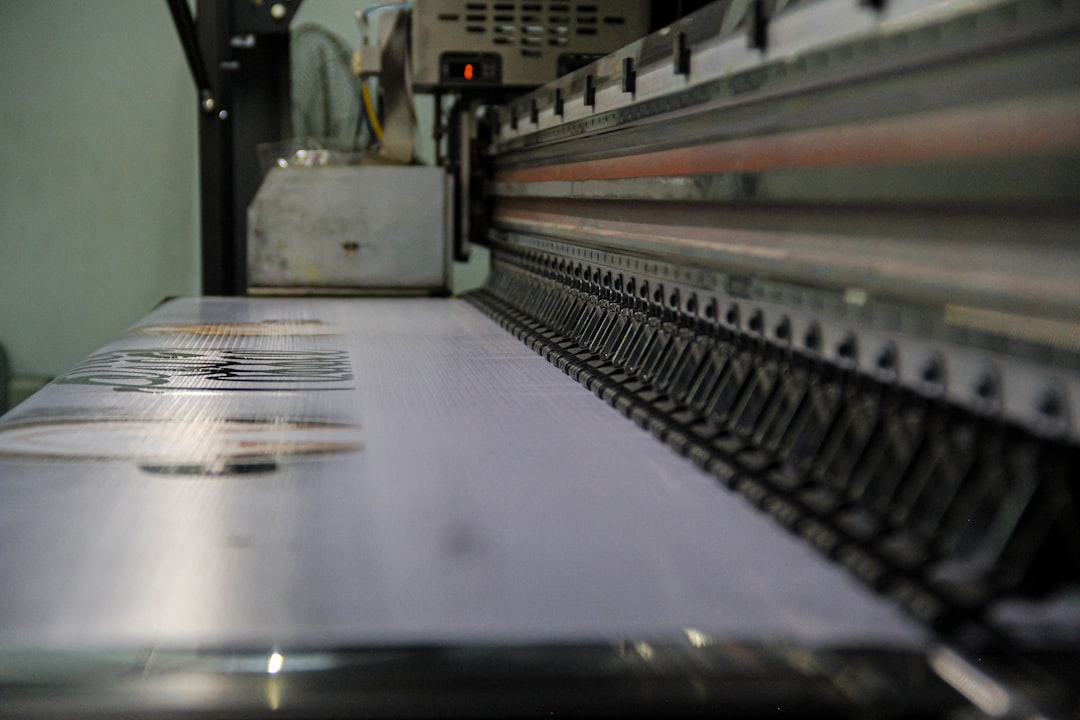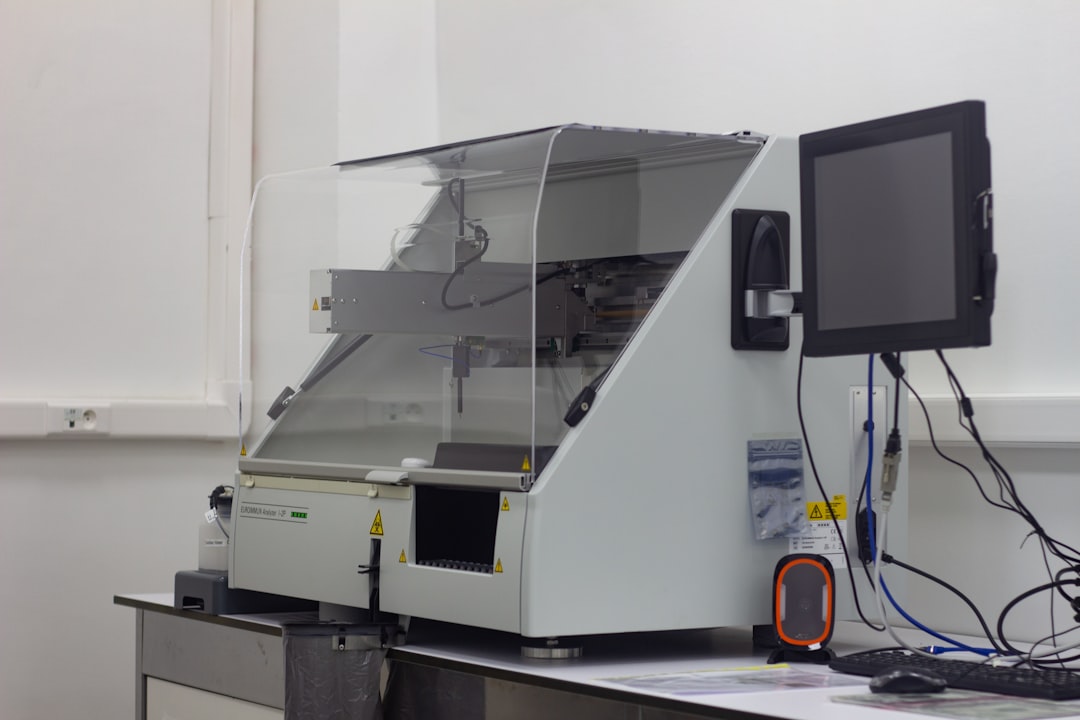

Engage prospects with a scan and streamline customer engagement with FREE QR code marketing tools by Sona – no strings attached!
Create a Free QR CodeFree consultation

No commitment

Engage prospects with a scan and streamline customer engagement with FREE QR code marketing tools by Sona – no strings attached!
Create a Free QR CodeFree consultation

No commitment
In today's digitally driven market, QR codes are transforming how printing plate suppliers engage customers and drive conversions. Once considered a tech curiosity, QR codes in marketing now offer a pragmatic, seamless bridge between durable physical products, such as metal barcode plates, and dynamic online experiences. Whether the goal is inventory management, packaging optimization, or streamlining product traceability, QR codes eliminate friction and make engagement as simple as a scan.
For printing plate suppliers, a persistent challenge lies in connecting traditional, high-quality plate products to digital platforms while also generating actionable insights. Missing high-value prospects, lost in the gap between physical plate distribution and CRM tracking, can erode both sales and marketing ROI. Customers want instant access to certifications, reordering, or support resources without tedious manual processes, and suppliers struggle to link evidence of engagement back to their campaigns. Durable QR codes, especially those laser-engraved onto metal QR code plates, provide a reliable gateway to enable visibility and follow-up where it matters most.
This article explores how strategically integrated QR codes support critical business outcomes for printing plate suppliers. From boosting lead quality and surfacing hidden opportunities to closing offline-to-online data gaps and ensuring lasting code durability, you will find practical approaches for achieving measurable gains in traceability, customer engagement, and repeat orders.

QR codes bridge the persistent gap between durable industrial assets and actionable digital outcomes, a crucial advantage for printing plate suppliers aiming to elevate lead quality and customer experience. They turn every plate, package, catalog, or demo kit into an engagement trigger that drives buyers to the next step and captures data that sales teams can use.
Many analog processes in this category inhibit lead quality and speed to revenue. Printed catalogs go out of date quickly, warranty cards get lost, and trade show sign-up sheets miss key details or never get properly entered into the CRM. Replacing those steps with QR-initiated forms, demos, and content unlocks higher-intent inquiries and makes attribution straightforward, including with Google Forms QR. Platforms like Sona QR let you build dynamic codes, update destinations without reprinting, and feed scan data directly into your CRM so every scan becomes a qualified signal.
With these tactics, printing plate suppliers turn passive offline touchpoints into predictable, trackable sources of qualified leads aligned with revenue goals. Over time, scan data will reveal which placements produce the best-fit opportunities so that budgets and efforts can be refocused for maximum impact.

Printing plate suppliers face unique hurdles: lack of visibility into anonymous traffic slows follow-up, physical marketing assets go untracked, and opportunities for retargeting slip away. QR codes address these constraints by creating instant, app-free access to product specs, compliance documents, and warranty registration, right from the surface of a metal plate or packaging label. When QR journeys are intentional and analytics-ready, every physical asset becomes a contributor to pipeline.
In practice, that means a buyer scanning a sample plate to see compatibility charts and safety data sheets can also be prompted to request a quote. A maintenance technician scanning a plate during an audit can confirm certifications and register for support updates. These micro-moments align operational needs with revenue motion while delivering measurable insights for marketing and sales teams.
Applied to shipping inserts, sample kit sleeves, and event signage, QR integration not only supports reordering but also ensures that every customer interaction is measurable and actionable. The outcome is a connected experience that accelerates decisions and raises marketing accountability.

Printing plate suppliers require flexibility in QR presentation and function to serve both industrial and retail partners. Selecting the right format for each moment reduces friction and improves data capture. From vCards for direct sales contact to app deep links for asset tracking, the format should mirror the user’s intent and environment.
When QR codes are etched on metal plates or printed on labels, durability and readability are critical. High-contrast designs and strategic placement help maintain scannability in facilities with variable lighting and dust. Dynamic management through a platform like Sona QR ensures you can adjust destinations as product lines or regulations evolve without disrupting the field.
For industrial suppliers, durable, laser-engraved QR codes and QR tags linking to compliance records or live documentation streamline audits and simplify post-sale support. The shift to dynamic codes means that if a compliance URL changes or a product line expands, you can update destinations globally without recalling assets.
Connecting physical and digital interactions remains a perennial challenge in the printing plate sector. Growth often stagnates when suppliers cannot pursue leads from in-person events, mailers, or distributed samples because engagement signals remain hidden. When QR codes are paired with compelling calls to action and proper attribution, every channel becomes measurable and iteratively improvable.
Start by mapping your highest-traffic offline touchpoints and adding QR-enabled journeys that match the user’s context. In environments where scanning may be constrained by lighting or motion, include clear framing, short CTAs, and test across devices. Then monitor scan volumes, conversion rates, and downstream outcomes to identify where to double down.
By consistently applying QR codes in these placements, suppliers avoid missed leads and build a clear, data-driven view of channel performance. Over time, the scan and conversion data will reveal the highest-leverage opportunities for both marketing and sales coverage.

Customer journeys in the printing plate industry rarely start and end online. Prospects handle sample plates, take photos of placards, and receive printed inserts with shipments. Without a QR-powered path to digital action, much of that interest remains invisible. Strategic use cases turn those moments into measurable steps that advance deals and support operations.
Focus on use cases that overlap buyer value and internal efficiency. If a use case reduces friction for a plant manager while exposing meaningful intent signals to your sales team, it belongs on your roadmap. Start small, then expand to additional products and regions as you build confidence in the analytics.
These scenarios show how QR codes turn physical plates and labels into intelligent triggers for sales, compliance, and service without disrupting established logistics. Even modest deployment can drive measurable improvements in lead capture, customer satisfaction, and retention.
Each QR scan is a signal containing rich context: who scanned, where they scanned, what they scanned, and when. By deploying different codes across the journey, you can segment audiences by funnel stage, product interest, and channel, then tailor follow-up to maximize relevance. This elevates retargeting beyond guesswork.
For printing plate suppliers, it is useful to distinguish between evaluators and operators. Evaluators include procurement, engineering, and quality managers who download certifications or request demos. Operators include pressroom staff and maintenance technicians who scan for setup guides and support. Tagging scans accordingly enables you to send procurement-focused messaging to evaluators and training or maintenance content to operators.
By putting QR scan data at the heart of audience creation, suppliers minimize irrelevant ad spend and increase response rates. Retargeting based on real behavior consistently outperforms broad, unsegmented campaigns.
QR codes function as connective tissue between offline materials and your digital engine. They enable real-time engagement and unlock attribution in channels that were previously hard to measure. For printing plate suppliers, this connection is especially valuable because so much of the buyer journey takes place around equipment, samples, and physical documentation.
To get started, map each channel to a specific action and ensure your landing pages are mobile-friendly with clear CTAs. Use UTM parameters for every QR destination so downstream analytics accurately reflect performance. Centralize code management to avoid fragmentation and to maintain a holistic view.
QR codes serve as the offline onramp to your digital marketing stack. With centralized management and analytics, they transform disconnected touchpoints into a coordinated, data-rich system that accelerates pipeline and improves customer experience.
Launching a QR program is not just about generating codes. It is about linking every scan to a clear objective, a compelling experience, and measurable outcomes. The steps below provide a repeatable path from concept to optimization.
Start with one or two high-value use cases that align with revenue or retention goals, like demo plate requests or compliance lookups. As wins accumulate, expand your program to additional placements, product lines, and regions. Throughout, document what you learn so future campaigns ramp faster.
Execution discipline makes QR integration a durable growth lever rather than a short-lived novelty. Revisit this checklist with every new campaign and share results across teams to accelerate adoption.
Reliable tracking has long been a struggle for printing plate suppliers. Generic analytics fail to capture account-level activity, and it is difficult to attribute pipeline to a specific brochure or sample kit. QR codes change this dynamic by enabling precise source attribution and by recording context with each scan. See offline attribution for frameworks to connect scans to revenue.
The analytics you collect should extend beyond counts. Scans are only meaningful when tied to downstream outcomes like meetings booked, quotes issued, or reorders placed. Integrating your QR platform with your CRM ensures that each scan can trigger the right workflow and contribute to lead scoring and forecasting.
A robust QR analytics stack, powered by tools like Sona QR and Sona, an AI-powered marketing platform for identity resolution and attribution, can unify QR events with website sessions, ad clicks, email engagement, and CRM activity to build a multi-touch view of attribution and readiness.
Scaling success requires consistent execution and thoughtful governance. As more teams adopt QR codes, standardize your design guidelines, naming conventions, and analytics practices to keep the program clean and reliable. The goal is a repeatable playbook that new campaigns can follow without reinventing the wheel.
Select tips that align with your common media and buyer journey. For printing plate suppliers, that often means catalogs, packaging, demo plates, and event signage. Layer automation where it reduces manual handoffs and speeds response times.
By integrating these tactics across product, marketing, sales, and operations, suppliers overcome the recurring pain point of incomplete account data and slow follow-up. The result is faster cycles, higher win rates, and better customer experiences.

The most successful QR programs combine strong user value with precise attribution. Below are examples that illustrate how printing plate suppliers can operationalize QR codes across the customer lifecycle and translate engagement into revenue.
Consider how each example might apply to your environment. If you run a heavy event calendar, start with the event example. If your priority is retention, start with reorders and post-sale support. Adjust landing pages and CTAs based on role and context to maximize conversions.
These cases highlight the versatility and measurable impact of QR codes when user value and data integrity go hand in hand. The common thread is converting previously anonymous interactions into signals that sales and marketing can act on immediately.
QR codes thrive on clarity and context. The highest scan rates come from placements with a strong visual frame, a concise benefit-driven CTA, and a reliable experience on the other side of the tap. Conversely, poor contrast, vague CTAs, and outdated links cause friction and drain trust.
As you scale, institute a quarterly audit to check link health, landing page performance, and code scannability across environments. Use the audit to retire outdated codes, refresh messaging, and pull learnings into the next quarter’s roadmap.
By anticipating and avoiding these pitfalls, suppliers keep QR programs performing at a high level and compounding gains over time.
QR codes are more than a shortcut. For printing plate suppliers, they are a strategy for turning every physical surface into a digital entry point, every moment of interest into a measurable action, and every scan into a signal that improves growth. When deployed with clear intent, QR codes connect samples, packaging, and compliance plates to experiences that reduce friction and accelerate decisions.
The payoff extends across teams. Marketing gains attribution in previously opaque channels. Sales receives timely, context-rich signals and routes them to the right reps. Operations and quality teams simplify audits and documentation. With a centralized platform like Sona QR, you can generate, manage, and optimize codes at scale, then use Sona to connect scan events to pipeline and revenue through identity resolution and multi-touch attribution.
Start with one high-impact use case, such as demo plate requests or packaging-based reorders. Build a simple, valuable experience, measure results, and iterate. As you scale, standardize design and analytics conventions so every new placement strengthens a connected, data-driven customer journey. When you are ready, you can create and track your first QR codes in minutes with Sona QR, start creating QR codes for free, then sync scan activity to your CRM and marketing platforms to close the loop from scan to sale.
QR codes have revolutionized the printing plate suppliers industry by turning traditional, static materials into interactive, measurable marketing tools. Whether it’s attracting new clients, enhancing customer engagement, or streamlining order tracking, QR codes simplify complex processes and provide real-time insights that transform every printed plate into a powerful conversion driver. Imagine instantly knowing which plates or campaigns generate the most inquiries and sales—empowering you to optimize your strategies on the fly.
With Sona QR, you gain the ability to create dynamic, trackable QR codes that can be updated anytime without the need for costly reprints. Connect every scan directly to your sales funnel, monitor customer behavior, and adjust campaigns instantly to maximize ROI. Don’t let your printing plates be just a product—make them a gateway to growth. Start for free with Sona QR today and turn every scan into a conversion opportunity.
QR codes on metal plates can be printed using laser engraving or etching, which provide durable, high-contrast, and scannable codes suitable for industrial environments.
Laser-engraved QR codes on metal plates are highly durable, resistant to abrasion and glare, and maintain scannability even in harsh industrial conditions.
Printing plate suppliers and related industrial sectors benefit from metal QR code plates for product traceability, compliance, inventory management, and customer engagement.
Laser engraving or etching offers high durability, excellent contrast for readability, resistance to environmental factors, and the ability to create permanent, tamper-proof QR codes on metal surfaces.
Select a supplier that offers dynamic QR code management, supports integration with CRM systems, provides durable laser engraving services, and can help align codes with your marketing and operational objectives.
Metal QR code plates reduce waste by allowing dynamic content updates without reprinting, eliminating frequent paper inserts, and providing long-lasting, reusable physical assets.
Ensure high contrast engraving, maintain an adequate quiet zone, avoid placing codes near visual clutter or difficult angles, and rigorously test codes under varied lighting and environmental conditions.
Costs are budget-friendly and scalable, especially compared to frequent reprints or manual inserts, with investments mainly in durable laser engraving and dynamic QR code platform subscriptions.
Metal QR code plates link to batch records, certifications, and compliance documents, enabling instant validation during audits and logging each verification for accountability.
Applications include product registration, warranty and support access, reorder forms, compliance verification, and linking to up-to-date technical documentation or catalogs.
Use Sona QR's trackable codes to improve customer acquisition and engagement today.
Create Your FREE Trackable QR Code in SecondsJoin results-focused teams combining Sona Platform automation with advanced Google Ads strategies to scale lead generation

Connect your existing CRM

Free Account Enrichment

No setup fees
No commitment required

Free consultation

Get a custom Google Ads roadmap for your business






Launch campaigns that generate qualified leads in 30 days or less.
